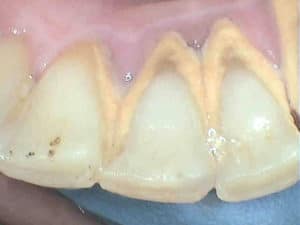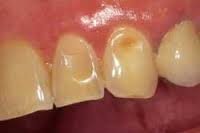
Dry mouth and its side effects
Dry Mouth (xerostomia) is a dental condition in which less saliva is produced in the mouth.
Everyday in our dental office we encounter individuals of all ages with dry mouth. It is important for patients to let us know if they have any medical conditions as well as any types of medications they are taking (prescription or over-the-counter).
Examples of dry mouth symptoms
Dry mucosa (cheeks, tongue, throat):
- Bad breath is the #1 concern with patients and their loved ones.
- Sores and irritations can show up in specific spots on the gums, the roof of your mouth, throat, tongue and lips.
- The tongue can have a very white appearance from being dehydrated. It can also be brown or yellow in appearance from coffee, wine, or tea drinking.
- The cheeks will have a dry, shiny haze to them, on which the saliva will stick to the surface and feel very stringy.
- The throat will feel very dry and sometimes sore due to persistent coughing and mucus accumulation.
Increase of cavities
One of the benefits of saliva is its neutralizing power to help control the acidic environment of our mouths. Depending on the foods and drinks we consume on a daily basis, it can play a major role on what it can do to our teeth. The enamel or exposed root surfaces of our teeth will gradually weaken and become sticky. Eventually sensitivity and discomfort will occur, and if left untreated can become a cavity.
Dental caries can show up in different ways on our teeth. Most of us have the impression that a cavity will hurt or be sensitive when we eat or drink something cold or sweet.
In reality, when a cavity is at its beginning stages, there are usually very little symptoms. They can be invisible to the eye because they are so small. This is why dental x-rays are very important to have done so we can catch them before they get too large.
Benefits of early caries detection
- Small restoration (Filling)
- Less discomfort
- No risk of infection to your body
- Less risk of tooth loss
- Adjacent teeth at no risk of having decay or bone loss
- Fresh breath
Plaque and tartar accumulation

When the teeth are dry they open an invitation for bacteria to attach to the surface.
This can range from a white sticky film (plaque) that can be seen between the teeth, or around the gumline if missed with the toothbrush and dental floss. Tartar (calculus) is a solidified accumulation that is more visible to the eye and has a rock like texture. It is impossible to remove with dental floss or a toothbrush at this stage.
A professional scaling by one of our Dental Hygienists will gently remove this accumulation from the teeth. If left for too long it can contribute to gum disease, an increase risk of cavities and sensitivity to your teeth and gums.
Dental erosions

Cavities can have different colors, shapes and sizes on the teeth.
A combination of an acidic diet with a dry mouth can drastically change the state of the teeth. There are incidences when patients will feel their teeth are more sensitive than usual towards cold and sweets.
Below are some links to help provide you with information to help with your dry mouth symptoms:
- Information about dry mouth
- Acidic foods and beneficial foods
- Medications that cause dry mouth
At Centre Dentaire Pierrefonds, our goal is to listen to your concerns and provide you with excellent dental care.
Please don’t hesitate to contact us at Centre Dentaire Pierrefonds at 514-624-1935. Our dental team is here to answer any of your questions or concerns.
